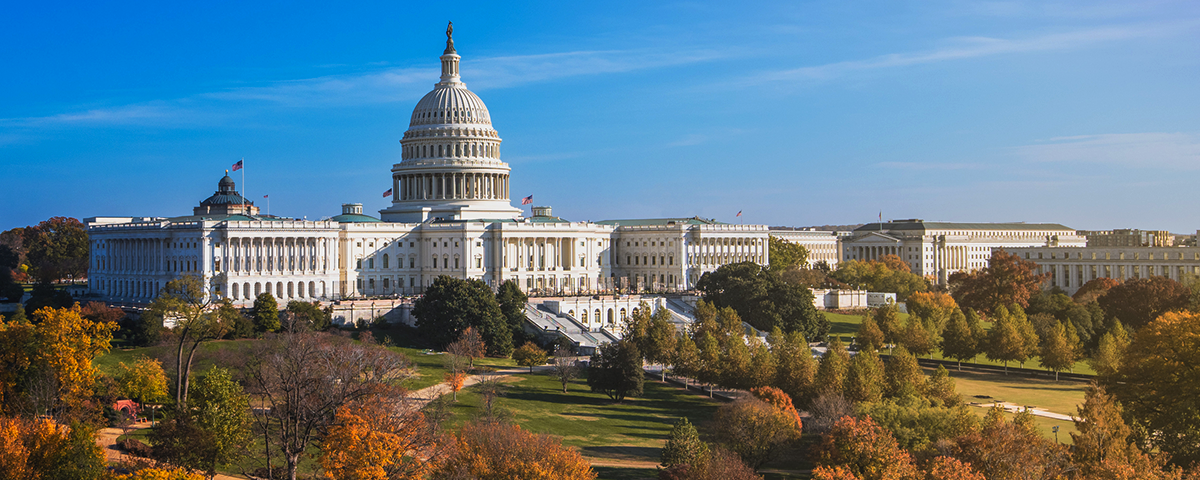
5 Reasons Why Trump’s Administration Could Strengthen Carbon Allowance Demand
With Donald Trump’s victory in the 2024 presidential election, questions inevitably arise about the future of U.S. climate policy and, specifically, compliance carbon markets. With federal climate action likely to stall under a Trump administration, attention turns to state-led initiatives like California’s Cap-and-Trade Program and the Regional Greenhouse Gas Initiative (RGGI), which covers the power sector across states in the Northeast and Mid-Atlantic.
For investors, we've highlighted why these state-driven carbon markets are likely to remain resilient—and may even strengthen—in response to a potential shift in federal leadership.
1. State-Level Independence: Unlike federal climate policies, compliance carbon markets in the U.S. have been established and are managed at the state level. California and RGGI states set their own rules, making these programs largely independent of federal influence. This local autonomy allows them to continue pursuing ambitious climate goals, regardless of changes in Washington, D.C.
Some states are actively developing economy-wide carbon cap-and-trade programs, with New York state currently designing its market and Oregon, Maryland, Vermont, and New Jersey with ongoing proposals.
2. Proven Legal Resilience: Both California’s program and RGGI have withstood numerous legal challenges, proving their robustness. This resilience suggests that even under a more conservative federal administration, these markets are prepared to defend their existence and continue driving emissions reductions. Given the legal foundations already in place, efforts to dismantle these programs at the federal level would face significant legal hurdles. The recent referendum on Washington state's Cap-and-Invest program demonstrated strong popular support, providing further evidence of the resilience of cap-and-trade systems that not only reduce emissions but also benefit communities. We cover the referendum results in more detail below.
Our recent report, California Cap-and-Trade: Navigating Real and Perceived Uncertainty, provides further analysis of how the CCA market has been tested yet remained resilient under various administrations.
3. Potential for Strengthening Programs: Historically, states with ambitious climate goals—often “blue” states—tend to double down on climate initiatives in response to federal resistance. With the new administration, it’s possible that California and RGGI states would see this as motivation to strengthen their programs. This could mean tightening emissions caps, increasing carbon prices, or expanding sectors covered under their systems.
4. Fossil Fuel Support Could Increase Carbon Allowances Demand: The new government is anticipated to prioritize fossil fuel development while scaling back policies that support renewable energy and reversing electric vehicle mandates. Many of the Trump administration's regulatory rollbacks faced significant legal challenges during its first term. However, if some of these rollbacks succeed—such as limiting offshore wind power development on the East Coast—it would likely increase fossil fuel usage, driving up demand for carbon allowances to cover the resulting higher emissions. Although we view the likelihood of a substantial impact on cap-and-trade programs as low, the risk appears tilted to the upside – highlighting the increased importance of carbon pricing as a key policy tool to achieve climate goals.
5. Incentive to Introduce Carbon Tariff: On a more speculative note, with the Trump administration favoring tariffs on foreign goods, we see a potential opportunity for the US to introduce a carbon tariff similar to the EU and UK Carbon Border Adjustment Mechanism (CBAM). A CBAM-type tariff could boost US industry in the sectors that President Trump has already highlighted, including steel and aluminum, by discouraging foreign imports while also keeping the country competitive with other nations that have or plan to implement CBAM.
Washington Voters Support the State's Carbon Market as Majority Reject Ballot Initiative 2117
Washington's state Ballot Initiative 2117, a measure to overturn the Climate Commitment Act (including the state cap-and-trade program), was rejected by 62% of voters, keeping the Washington carbon market in operation. The initiative was introduced by a hedgefund manager under the Let's Go Washington lobbying group, among other initiatives, including one to repeal or prohibit regulations discouraging natural gas use.
The initiative created some uncertainty around the market's compliance obligations for 2023-24 emissions, where regulated entities are required to surrender allowances covering 30% of their emissions for the year. The 2023 deadline was just four days before the election, and it was unclear what would be in store for the remaining 70% of entities' obligations for 2023 and 2024. With the WCA market authorized to remain, these obligations are no longer of concern and will continue as usual.
After the Secretary of State initially certified it for the ballot on January 16, WCA prices started slipping lower, hitting a low of $30 in mid-March. In the lead-up to the election, prices began rebounding as it seemed likely the initiative would be struck down, jumping back up to a high of $63 on November 6, over 121% higher since their low. WCA prices have since stabilized around $57.15.1
Long Term Conviction for Carbon Markets
Carbon markets have demonstrated resilience and growth across political cycles, with compliance carbon* prices rising triple digits during Trump’s first term.2 This resilience reflects the strength of state-led programs like California’s cap-and-trade system and the Regional Greenhouse Gas Initiative (RGGI), which operate independently of federal shifts. If the new administration backtracks on environmental policy and is more supportive of fossil fuel development, the potentially higher emissions could further increase demand for carbon allowances, driving prices higher and underscoring the value of these markets for long-term investors.
Regardless of our national policies, the world is moving steadily toward carbon pricing mechanisms. The KraneShares Global Carbon Strategy ETF (KRBN) offers investors a unique opportunity to benefit from this essential asset class and its long-term growth potential. KRBN provides exposure to the four largest, most liquid carbon allowance futures markets. Roughly 35% of KBRN is allocated to US carbon markets, including California's cap-and-trade market and RGGI power market.
For KRBN standard performance, top 10 holdings, risks, and other fund information, please click here.
*Carbon Allowances: Top 4 carbon allowance markets by constituent trade volume. The Index is used since the index start date July 25, 2019. From 11/30/2016 to prior to the index start date, 60% and 5% were respectively assigned to EUA futures prices (current year and next year December vintages) using Intercontinental Exchange daily published settlement prices, 20% and 5% were respectively assigned to CCA futures (current year and next year December vintages) using IHS Markit OPIS’s daily Carbon Market Report published prices, and 10% was assigned to RGGI (current year December vintage) using IHS Markit OPIS’s daily Carbon Market Report published prices. Prior to 11/30/2016, 60% and 5% respectively were assigned to EUA futures prices (current year and next year December vintages) using Intercontinental Exchange daily published settlement prices and 35% was respectively assigned to CCA futures (current year December vintage) using IHS Markit OPIS’s daily Carbon Market Report published prices. For the two ranges developed prior to the index start date, Intercontinental Exchange and IHS Markit OPIS’s Daily Carbon Market Report publish daily pricing for each contract vintage for all relevant days when the futures trade.
Citations:
- Data from Bloomberg as of 11/9/2024.
- Data from Bloomberg as of 12/31/2020.










